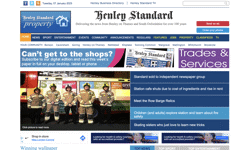Although print ad pages reported by Publishers Information Bureau members declined 1.6% during the first nine months, strong September issues helped drive a 3.6% ad-page gain in the third quarter (136 magazines saw gains, compared to 25 in 2009’s third quarter). Q4 and early 2011 performance will provide a more telling benchmark as to whether slow economic improvement will result in a sustainable trend of recouping some of the last few years’ losses.
Newsstand trends
Not surprisingly, given that consumers show little sign of increasing discretionary spending, the newsstand has continued to suffer. Total unit sales declined 7.7% in the first half and dollars dipped by 6.1%, despite a 1.7% increase in average cover price (to $4.60, according to The New Single Copy).
The gleam of hope here is that the magazine category is starting to harness data and marketing techniques that could help stem the unit losses and improve profitability. For example, according to Time/Warner Retail president / CEO Rich Jacobsen, T/WR’s extensive retail testing of price, coupon and other incentives (including cross-marketing with other products), combined with consumer data, has recently uncovered methods that result in attracting consumers who continue to purchase a magazine post-promotion. Significance: consumer behaviour is being influenced in mass outlets, and the incremental sales turn promotions’ traditionally negative P&Ls to positive. This has real potential for moving the needle, particularly if such targeted incentive methods are widely adopted.
Expected high-single-digit increases in both paper prices and postal rates will create additional balance sheet pressures in coming months.
App pricing
Of course, 2010 will be most remembered for marking magazine publishers’ aggressive entry into apps for etablets and smartphones – and these are expected to be the big growth-drivers for 2011 and beyond.
One of the most intriguing questions on this front is how “consumer-driven” the business models for these new revenue channels will eventually turn out to be.
To date, for purchases of single-issue iPad apps, most major titles are charging the same as their print cover prices, or just a bit less (good news for the beleaguered newsstand side). However, judging by posts on magazines’ iTunes iPad pages, many consumers are balking at paying full cover price for digital issues, and many current print subscribers are piqued that the iPad edition isn’t being provided free, as part of their subscriptions.
Time Inc’s People is trying the latter approach. The magazine is rewarding existing print subscribers, and looking to attract new, iPad-enamoured ones, by including iPad editions in the print subscription price. (Others pay $3.99 per iPad issue download.) But that strategy reflects People’s unusually profitable print subscription circulation (average sub price: $116). It also circumvents the issue of ceding control of new-subscriber customer data – the Apple demand that’s been the main obstacle to publishers offering iPad subs through iTunes.
Of course, experimentation is the name of the game at this stage. For example, instead of charging the same price for all iPad issues, Condé Nast’s GQ is charging $4.99 for the first download, but only $2.99 for subsequent ones.
As for paid iPad subs, at this writing, various trades are reporting that, due to Apple’s eagerness to launch an online storefront devoted to periodicals subscriptions, negotiations progress is afoot on both the magazine and newspaper fronts.
Assuming that iPad subscriptions become reality soon, it will be interesting to see how pricing and models play out. Next Issue Media consortium research concluded that consumers will be willing to pay the same prices for iPad subs as for print subs, and some major publishers have indicated that they don’t plan to offer below-print rates.
Even sold at low print sub price levels, iPad sub margins would be highly attractive, given significantly lower production and marketing costs, not to mention associated advertising revenue – but that’s not factoring in a 30% Apple cut. Will publishers find it justifiable to swallow that bite, at least in the short term, as the competitive devices scenario plays out?
Revenue pressures and basic testing-the-waters logic will likely mean fairly aggressive iPad magazine subscription pricing, at least initially. But if the economy improves, might publishers be tempted to offer lower prices to drive volume, if there’s still some circulation margin and more users would attract more advertising?
Well, maybe. But publishers do seem determined to maximise both the consumer and advertising revenue streams in this fresh, new world of opportunity. For instance, there’s already some evidence of efforts to tie etablet and smartphone apps into fairly high-ticket premium online memberships (ESPN The Magazine has reportedly proposed such a model to Apple). And we will no doubt see many more model iterations in the months ahead.










